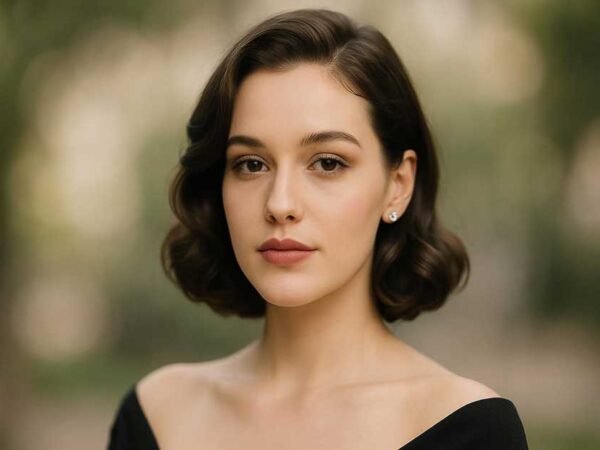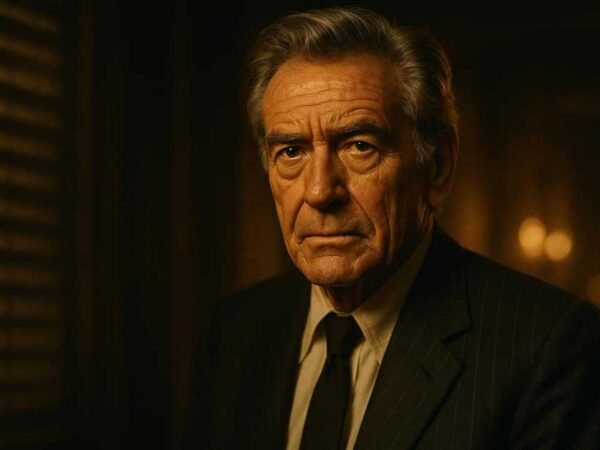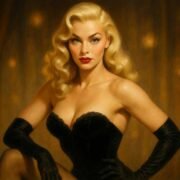I. Introduction
Lola Albright, an American actress and singer, carved a distinctive niche in Hollywood with her captivating presence and versatile talents. Known for her sultry voice and enigmatic charm, she left an indelible mark on both the big and small screens.
Her career spanned several decades, during which she transitioned seamlessly between dramatic roles and musical performances. Albright’s most iconic portrayal, that of Edie Hart in the television series “Peter Gunn,” cemented her status as a beloved figure in entertainment history.
II. Early Life and Career Beginnings
Born Lola Jean Albright on July 20, 1924, in Akron, Ohio, her early life was steeped in music. Her mother was a concert pianist, and her father was a factory worker with a passion for singing. This musical upbringing undoubtedly influenced her later career as a singer.
Albright began her professional journey as a model before venturing into acting. Her striking looks and natural poise quickly caught the attention of talent scouts. She made her film debut in the late 1940s, taking on minor roles that gradually showcased her potential and paved the way for more significant opportunities in-depth characters.
III. The Peter Gunn Era: Edie Hart and Stardom
It was in 1958 that Lola Albright landed the role that would define her career: Edie Hart, the sophisticated and alluring nightclub singer in the detective series “Peter Gunn.” Her portrayal of Edie, the girlfriend of the titular private investigator, captivated audiences.
Albright’s sultry singing voice was a prominent feature of the show, as she performed many of the theme songs and musical numbers composed by Henry Mancini. The role not only showcased her acting prowess but also her musical talent, making her a household name and a cultural icon of the late 1950s and early 1960s.
IV. Film and Television Work Beyond Peter Gunn
While “Peter Gunn” brought her widespread recognition, Lola Albright’s career extended far beyond the confines of television. She demonstrated her dramatic range in a variety of films, including the critically acclaimed 1961 drama “A Cold Wind in August,” where she delivered a powerful performance as a carnival dancer.
Her filmography also includes roles in movies such as “Champion” (1949), “The Tender Trap” (1955), and “Kid Galahad” (1962), often playing strong, independent women. On television, she made numerous guest appearances in popular shows of the era, further solidifying her reputation as a versatile and compelling actress.
V. Musical Career and Other Ventures
Beyond her acting career, Lola Albright was an accomplished singer. Her distinctive vocal style, often described as smoky and sophisticated, led to the release of several albums. Her most notable musical work was closely tied to her role in “Peter Gunn,” where her performances of Henry Mancini’s compositions became highly popular.
Her albums, such as “Dreamsville” and “Lola Wants You,” showcased her ability to interpret jazz standards and ballads with a unique blend of vulnerability and allure. While her singing career was often overshadowed by her acting, it remained a significant part of her artistic expression and contributed to her multifaceted appeal.
VI. Later Life and Retirement
As the entertainment landscape evolved, Lola Albright gradually transitioned away from the demanding schedule of acting. While she continued to make occasional appearances in film and television throughout the 1970s, her focus shifted towards a more private life.
She retired from acting in the early 1980s, choosing to live a quiet life away from the public eye. Lola Albright passed away on March 23, 2017, at the age of 92, leaving behind a rich legacy of performances that continue to resonate with audiences.
VII. Legacy and Influence
Lola Albright’s legacy extends beyond her individual performances; she embodied a particular archetype of the strong, independent woman in mid-20th century Hollywood. Her roles often showcased characters with depth and complexity, challenging the conventional portrayals of women in media.
Her collaboration with Henry Mancini on “Peter Gunn” also left a significant musical footprint, with her vocal performances becoming synonymous with the show’s iconic jazz score. She is remembered not just as an actress, but as a multifaceted artist who brought a unique blend of glamour, grit, and musicality to her work.
VIII. Conclusion
In conclusion, Lola Albright was a remarkable talent whose career spanned the golden age of Hollywood television and film. From her early beginnings as a model to her iconic role as Edie Hart and her versatile performances in various films, she consistently delivered memorable portrayals.
Her unique blend of acting prowess and vocal talent set her apart, making her a true multifaceted artist. Lola Albright’s contributions to entertainment continue to be celebrated, ensuring her place as an enduring figure in the annals of American show business.













